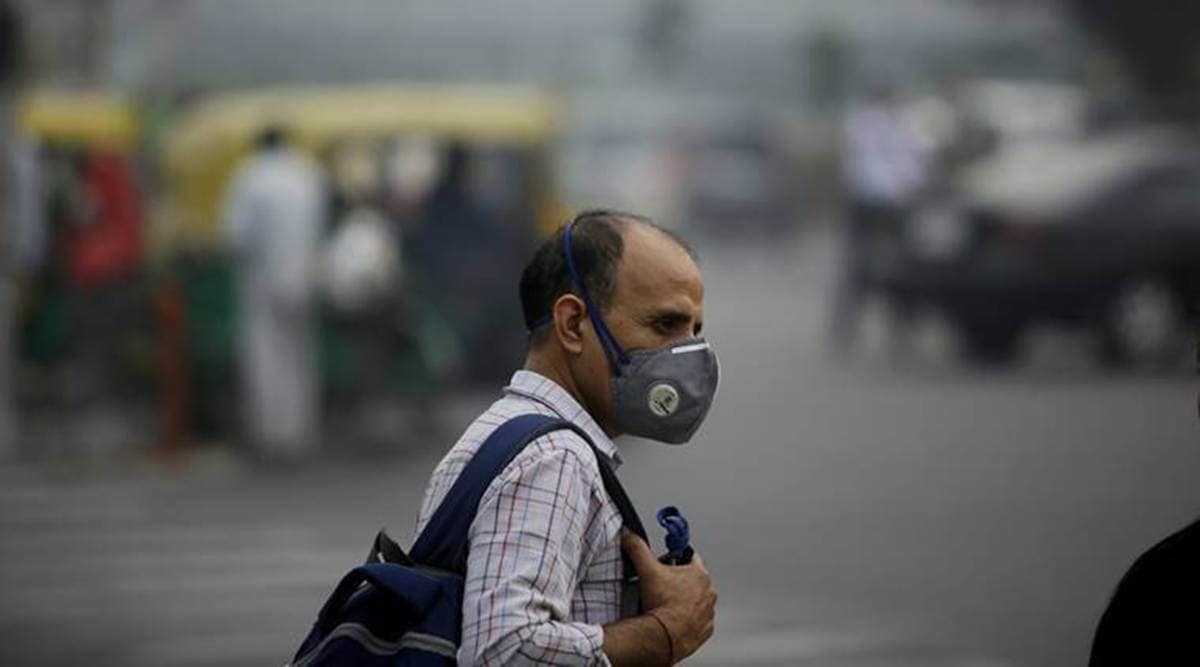 The only drawback, as per the researchers, remained the lack of data for a comprehensive analysis and comparison between rise in densities of particles and pollutants in several years. (Representational)
The only drawback, as per the researchers, remained the lack of data for a comprehensive analysis and comparison between rise in densities of particles and pollutants in several years. (Representational)A joint study conducted by PGIMER and Panjab University (PU) on the impact of Covid-19 lockdown on air quality in Chandigarh has found that there was a considerable reduction in concentrations of almost all pollutants during different phases of the 54 days of lockdown.
The study duration was divided into four parts — 21 days of before lockdown, 21 days of the first phase of lockdown, 19 days of the second phase of lockdown, 14 days of the third phase of lockdown.
The study recently published in the journal Chemosphere entitled ‘Impact of Covid-19 lockdown on air quality in Chandigarh, India: Understanding the emission sources during controlled anthropogenic activities’ examined the trend of 14 air pollutants, including particulate matter (PM10, PM2.5), trace atmospheric gases (NO2, NO, NOx, SO2, Ozone, NH3, CO) and Volatile Organic Compounds (benzene, toluene, o-xylene, m,p-xylene, ethylbenzene) along with six meteorological parameters.

Conducted by the Department of Environment Studies, PU along with Department of Community Medicine and School of Public Health, PGI, the study concluded that there was a significant reduction in the concentrations of almost all pollutants except sulfur dioxide, ozone, and mp-xylene. While the levels of almost all of the pollutants decreased during the lockdown, levels of Sulfur Dioxide as well as ozone showed a continuous increase in their concentrations as the lockdown progressed. The study added that the trend has been noticed across the globe during lockdown events.
Dr Suman Mor, Chairperson, Department of Environment Studies, PU and the lead investigator of the study, highlighted that vehicular pollution contributes as a primary source of air pollution during different stages of lockdown.
Further, she added that regional atmospheric transfer of pollutants from coal-burning and stubble burning were identified as secondary sources of air pollution.
The maximum decreases, read the study, “Were found to be associated with the restriction on automobiles and the shutting of industries during the first two phases of lockdown. When these activities were partly started during the third phase of lockdown, higher concentrations were recorded for almost all the pollutants as compared to the first two phases.”
In addition, local emissions from residential areas also adversely affect the air quality of the city, concludes the study.
Busting myths as people absolve them of being responsible towards causing air pollution while blaming the industrial revolution for it, the study has found vital evidence that local household air pollution also affects the overall air quality of Chandigarh.
Talking about the main causes that attribute to domestic air pollution, Mor said, “Domestic activities such as bonfires, smoke from chimneys and burning of waste are the leading cause that cause air pollution. Biomass duel burning adds significantly as well, but since Chandigarh remains a mostly urban city, such pollution is less, though exists in its outlaying parts.”
Dr Ravindra Khaiwal, Additional Professor of Environment Health, Department of Community Medicine and School of Public Health, PGI, who coordinated this study, said that reduction in air pollution is linked to the decline in local emissions and frequent rainfall.
He also highlighted that the increase in Ozone concentration seems to be associated with intense solar radiation and high temperature, which enhances the atmospheric reactivity during the lockdown, leading to a rise in Ozone concentration not only in Chandigarh but many cities in India.
The study stands to offer the potential to plan air pollution reduction strategies in extreme pollution episodes such as during the crop burning period. It may also be used to plan policy interventions to reduce air pollution originating from local and regional sources in and around UT.
The percentage decrease in the concentrations during the three phases of lockdown were stated to be 28.8 per cent, 23.4 per cent and 1.1 per cent for PM2.5 and 36.8 per cent, 22.8 per cent and 2.4 per cent for PM10 respectively, both of which are the most harmful air pollutants and leading cause of health issues when found in high density.
The only drawback, as per the researchers, remained the lack of data for a comprehensive analysis and comparison between rise in densities of particles and pollutants in several years.